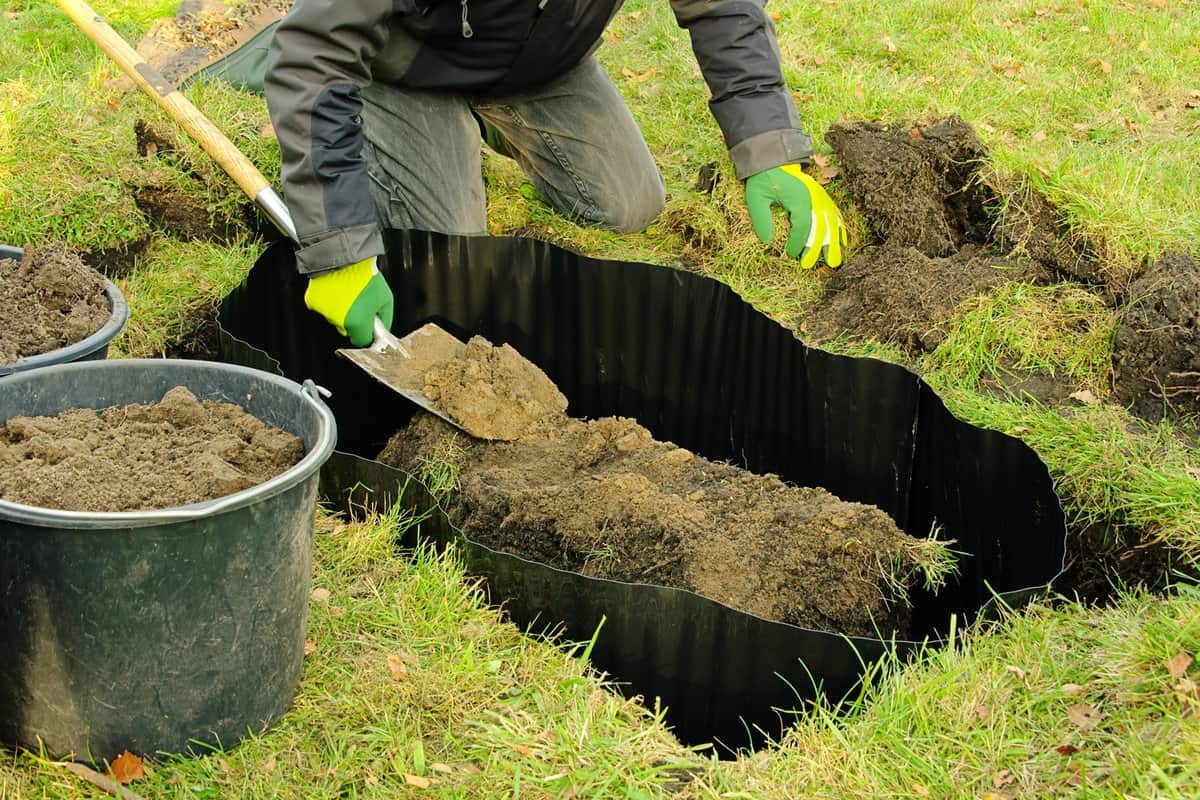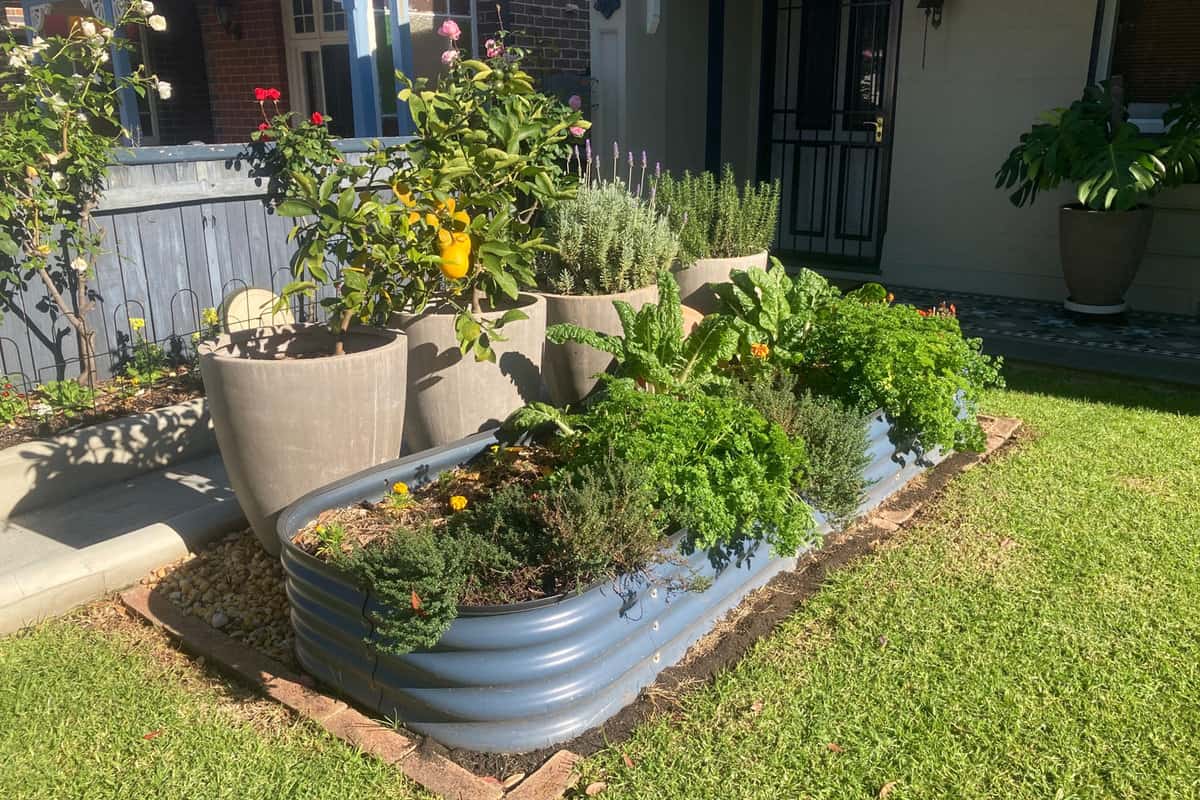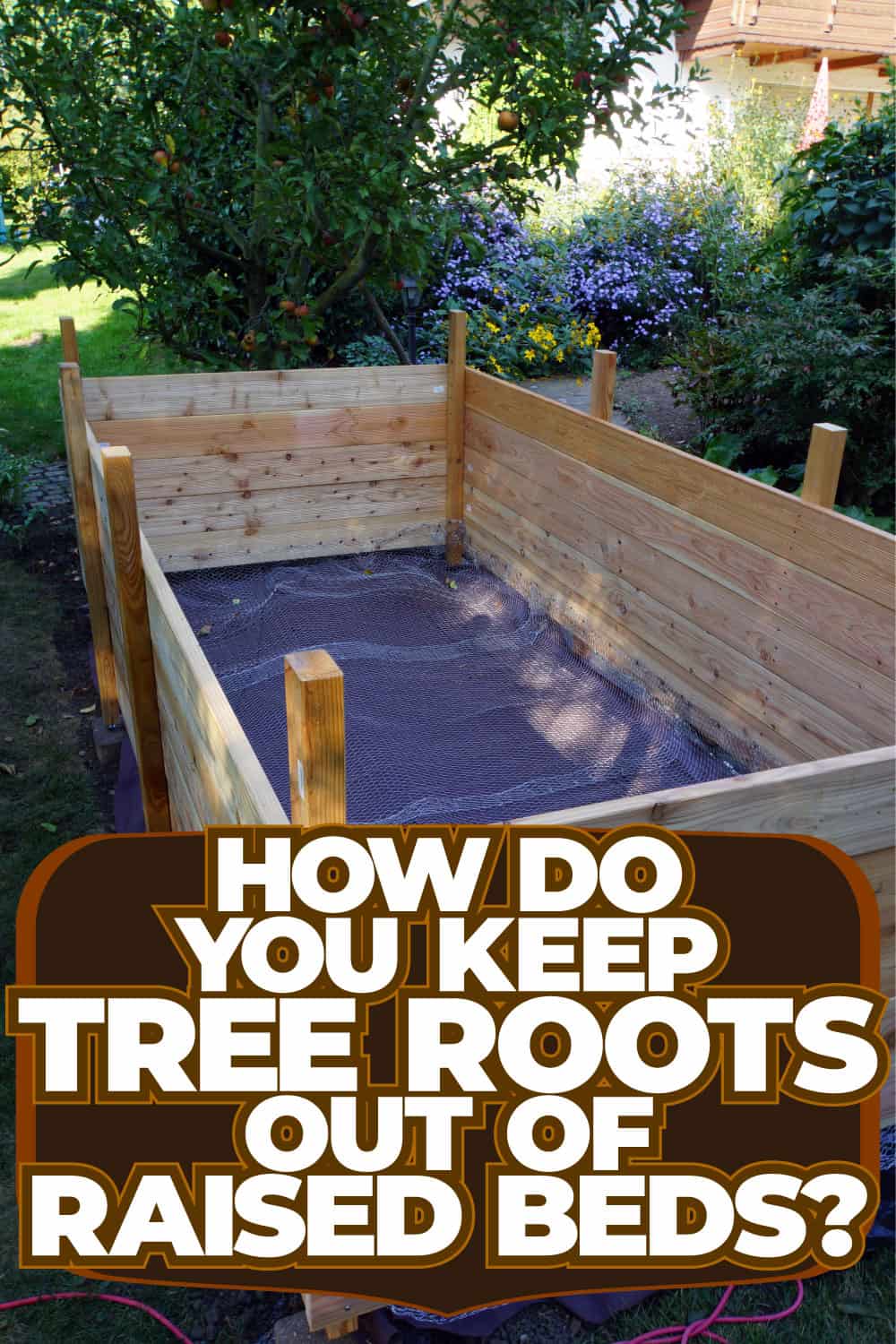It is highly likely that unchecked/improperly maintained tree roots will someday cause a problem. Of course, they don't intend to cause trouble. They often move toward the best soil close to the surface, such as raised beds.
Want to know how to keep the tree from invading raised beds? We thoroughly researched this topic to help you, and here's what we found!
Installing a root barrier is a great way to keep tree roots out of raised beds. Here's how to install one below:
- Determine the origin of the invasive roots.
- Make a trench that is deep enough for roots to penetrate and wide enough to spread.
- Cut any encroaching roots you come across while digging.
- Put root barriers on their edges against the far side of the trench.
- Fill the trench with the gathered rocks and soil.
This article will go into more detail about the steps above. We'll also explain the purpose of a tree root barrier and offer tips on how to stop tree roots from creeping into raised beds. There is more information to come, so keep reading!

How Do You Keep Tree Roots Out Of Raised Beds?
Your raised bed's deep, nourishing soil is perfect for your chosen plants, but it also draws roots from adjacent grasses, trees, and plants.
Taking some precautions before building the raised bed can prevent these roots from infiltrating it. You may avoid wasting time and effort by being proactive now.
But don't worry, if you discover roots in your raised bed later, you still have options such as installing tree root barriers.
Root barriers do not harm trees, provided an excellent root barrier is selected and installed correctly.
They may shield the tree by allowing it to flourish even in regions with hardscape and landscape components.
Here’s how it is done:
1. Determine The Origin Of The Invasive Roots
Dig into the bed closest to the suspicious tree if you believe tree roots are getting into your garden. Pull the root upward to gain a better look at any root and determine its direction of origin.
A thin, easily broken root could be a viny root from an invasive weed like horsetail.
But if the root is more substantial and woody, dig it out farther to observe its growth pattern. It will point to the tree that served as the source. The size of the tree will offer you a clue as to the severity of the issue.
Expect more than one or two roots if it is a large tree. Since the tree's roots radiate outward, you may picture the pattern they are most likely following.
You can determine how long to make the trench using this.
2. Make A Trench That Is Deep Enough For Roots To Penetrate And Wide Enough To Spread
Before digging, lay a tarp or ground cover along the planned path. Put dirt on the tarp as you shovel it. This will make it simpler to fill the trench back up with soil after removing all of it.
Click here to see this tarp on Amazon.
To have space for you to stand in when excavating the deeper portion of the trench, start the trench by digging down and making it wide enough for you.
To make it simple to climb out, leave a step on one end. Set any rocks, you come across on the surface close to the trench to make it easy to put them back in when it's time to backfill.
3. Cut Any Encroaching Roots You Come Across While Digging
Your shovel will eventually run into one of the roots. To thoroughly expose the root, remove the surrounding soil and see it from both sides of the trench.
There won't be any root stubs in the trench. For this task, you can use a tiny hand-pruning saw.
Click here to see this pruning saw on Amazon.
4. Put Root Barriers On Their Edges Against The Far Side Of The Trench

To create the barrier, look for some old galvanized metal roofing sheets. High-density polyethylene (HDPE) plastic sheets that have been doubled are also fantastic alternatives.
Click here to see this HDPE root barrier on Amazon.
HDPE is durable enough to withstand years of exposure to the elements underground. Ask if these are available at your local feed store; use the galvanized roofing.
However, thousands of residential and commercial applications have relied on DeepRoot tree root barrier panels as a reliable root barrier solution.
Click here to see this DeepRoot root barrier on Amazon.
If you are using metal sheets, fold the top edge over. This can be done manually to create a loose fold, further tightening after the dirt is refilled.
Alternatively, you can use a strong pry bar to force it shut. The top edge of the metal barrier may stick out slightly above ground level once the procedure takes place, which is why you need this folded edge.
A danger would arise from any sharp edge.
Click here to see this pry bar on Amazon.
To ensure that no roots may pass through the barrier, make a continuous wall out of the sheeting and overlap the ends as possible.
5. Fill The Trench With The Gathered Rocks And Soil
Throw whatever rocks you've gathered into the hole, then fill it with soil. Due to the dirt's tendency to compact when walked on, fill the trench to the brim.
No need to dig up and remove the severed tail ends of the roots in your garden beds. They'll waste away over time, supplying nutrients for upcoming crops.
For you to visualize how it is done, a video on installing a root barrier to block the invasive bamboo roots creeping into the garden box is shown on YouTube below:
What Does A Tree Root Barrier Do?

Essentially, a root barrier is what it sounds like: a tool that stops underground tree roots from spreading and inflicting harm on nearby structures.
Root barriers can be either physical or chemical. The latter frequently uproots the local plant life and destroys tree roots to stop their growth.
Therefore, installing a physical root barrier is advisable, a less harmful and more environmentally friendly choice.
Physical root barriers merely redirect roots. They don't harm trees.
Such as an HDPE root barrier that acts as a waterproof seal to prevent soil moisture loss while safeguarding pavements, hardscapes, utility piping, and foundations from harm.
Tree roots can invade garden soil and rob your plants of moisture, but root barriers can prevent this.
Consider looking beneath the soil if your crops aren't as healthy as they once were, but your backyard's large, old oak tree looks better than ever.
Installing a root barrier is probably necessary if wooden roots grow where they shouldn't be. Root barriers can aid in establishing a setting where all plants can peacefully coexist as well as an essential safety factor.
For instance, in public areas, tree roots encroaching on sidewalks could cause the concrete to lift, posing a tripping hazard and potential legal liability.
A news report in regards to this kind of disturbance on the sidewalk is shown on YouTube below:
Root barriers can help avoid expensive damage to yards, driveways, swimming pools, and the entire foundation if the tree is on your property.
What Are Some Tips To Prevent Invasive Roots In Raised Beds?

Many yards today are relatively small. It's challenging, if not impossible, to keep the plantings more than a few feet apart.
Trees and bushes with flowers should still be possible for you to appreciate all year long.
If you are just about to make your raised beds, the following are some tips to organize your space and stop invasive roots from damaging it:
- Place your garden or raised beds in your yard free of invasive plants and trees. Being aware of what is underneath the surface as well as above will help you avoid issues.
- Make careful selections if you intend to beautify the area around your garden location with trees and plants. It won't be as simple as growing indoor plants, so learn about the many types of root systems different trees have.
- Build raised beds off the ground. They have a sturdy bottom and legs to lift the bed off the ground and to the desired height. Since the garden wouldn't be in direct contact with the ground, neither your garden nor the cultivated crops will be harmed by tree roots.
- Typically, roots don't grow upward. But their eagerness to infiltrate your garden might be because of the need for water. So, you might want to give the tree or shrub more water if your location is experiencing drought to relieve the stress.
- Add liner (weed barrier cloth, old carper, or polyester geotextile) to the raised bed’s bottom. You will create a barrier that holds the roots back. This will need to be done every year or two again and is probably not a long-term solution.
- Use containers to grow your plants.
To Wrap Up
At first, creating a root barrier seems like a complex undertaking. But once it gets going, it moves along quickly.
Knowing that you have protected your garden beds from invasive roots and that the plants intended to benefit from the unique additives, fertilizer, and water you have added to your garden will thrive is rewarding.
Made it to the end? Check out these related posts below:
Do Tea Trees Have Invasive Roots?
Does Olive Tree Have Invasive Roots?






